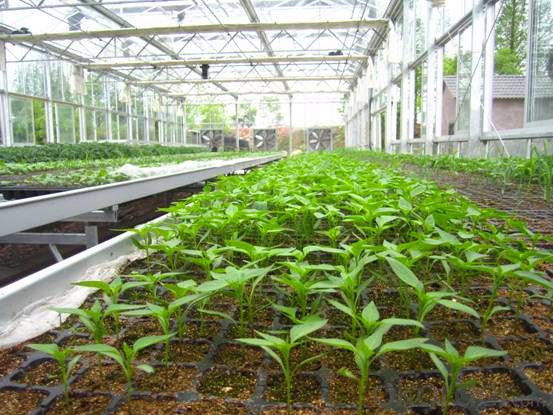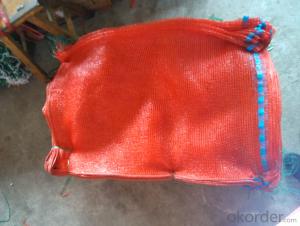Square Nursery Plug Tray, Nursery Plug Tray, Seeding Plug Tray
- Loading Port:
- China main port
- Payment Terms:
- TT OR LC
- Min Order Qty:
- 3000 pc
- Supply Capability:
- 2000000 pc/month
OKorder Service Pledge
OKorder Financial Service
You Might Also Like
Specification of Plug Trays HIPS Made Plastic Plug Tray for Greenhouse (Growing and Seedling):

Features of Plug Trays HIPS Made Plastic Plug Tray for Greenhouse (Growing and Seedling):
· Material: HIPS
· Thickness: 0.5mm-1.5mm, Standard:1mm
· Weight: 80g(±5)g-230g(±5)g, Standard weight:155g(±5)g
· Size: length:490mm-540mm, width:190mm-345mm,depth:25mm-150mm
· Standard:540mmX280mm
· Cell count: 18-512
· Package: In Carton
· Warrenty: 8-10 times
Packaging & Delivery
Packing Detail: export standard carton or large bags
Delivery time: 4 million per momth after receipt of deposit
Advantage:
Waterproof, UV-resistant, extrusion-resistant
Easy carry for young seeding plant and grow
Service:
1. Quick, efficient and professional response within 24 hours, 14 hours online services
2. 10 years manufacturing and exporting experience in agriculture field.
3. Technical support and solution by chief engineer.
4. Strict quality control system & team, high reputation in the market.
5. Full range of irrigation products for choice
6. OEM/ODM services
7. Accept sample order before Mass Order
Picture of Plug Trays HIPS Made Plastic Plug Tray for Greenhouse (Growing and Seedling):


FAQ of Plug Trays HIPS Made Plastic Plug Tray for Greenhouse (Growing and Seedling):
Q: 1.How long is the production time?
A: Usually one to two weeks.
Q: 2.How is the seed tray being packaged?
A: They can be packaged in carton or pallets. Carton size is 1375px*725px*1250px.
Q:3.How many times can the seed tray be used?
A: Under the same environment, it is decided by the thickness. Usually 0.6mm thickness can be used for 1 or 2 times.
1.0 thickness can be used for 3-4 times. 1.5 thickness can be used for 8-10 times.
- Q: Are nursery trays suitable for medicinal herbs?
- Yes, nursery trays are suitable for growing medicinal herbs. Nursery trays provide an ideal environment for germinating and cultivating various herb species, allowing for easy transplanting and efficient use of space. Additionally, these trays can be equipped with proper drainage holes and ventilation, ensuring the herbs receive adequate moisture and airflow for optimal growth.
- Q: so for science we need to make a 'plastics poster' containing information about a certain type of plastic. i got type 1 (PET- polyethylene terephthalate). i already got most of the information, but 2 questions i dont get: a brief explaination of how the plastic is recycled (the process? idk), and the quot;cost-to-benefit ratioquot; of recycling this plastic. help please?
- You wanna make yourself into Plastic? LOL
- Q: What are some ground cover options for wet or waterlogged areas?
- Some ground cover options for wet or waterlogged areas include creeping Jenny, Irish moss, sweet woodruff, marsh marigold, and ferns.
- Q: What types of plastic bags are used for bird seed packaging?
- The types of plastic bags commonly used for bird seed packaging include polyethylene bags, polypropylene bags, and laminated bags.
- Q: i have wrecked my honda recon and want to buy replacement plastic...where can i do so?
- This Site Might Help You. RE: i need new plastic for a honda recon? i have wrecked my honda recon and want to buy replacement plastic...where can i do so?
- Q: Can nursery trays be used for growing herbs?
- Yes, nursery trays can be used for growing herbs. Nursery trays provide a convenient and efficient way to start herb seeds or propagate herb cuttings. They offer proper drainage, space for root development, and easy transportation. However, it is important to ensure that the trays have sufficient depth, proper soil, and adequate light conditions for herb growth.
- Q: What are the regulations governing the use of biodegradable agricultural plastics in Europe?
- <p>Yes, there are regulations on the use of biodegradable agricultural plastic in Europe. The European Union has established directives and standards, such as the Packaging and Packaging Waste Directive (94/62/EC) and the Waste Framework Directive (2008/98/EC), which aim to reduce waste and encourage the use of biodegradable materials. Additionally, specific standards like EN 13432 for packaging recovery define criteria for biodegradability. Member states may have their own regulations that align with or add to these EU directives. Compliance with these regulations is crucial for manufacturers and users of biodegradable plastics in the agricultural sector.</p>
- Q: This question asks for methods to decrease the waste produced by agricultural plastic products.
- <p>To reduce waste from agricultural plastic products, consider the following strategies: 1) Use biodegradable or compostable plastics that break down naturally in the environment. 2) Implement recycling programs to collect and repurpose used plastics. 3) Employ precision agriculture to minimize the use of plastic by optimizing the application of resources. 4) Encourage the use of alternative materials like natural fibers or starch-based plastics. 5) Promote the use of durable and reusable plastic products to extend their lifespan. 6) Advocate for policies that regulate the use of single-use plastics and encourage sustainable practices. 7) Educate farmers on the importance of reducing plastic waste and provide them with practical solutions.</p>
- Q: Do you have a definition what plastic actually is? You know, i have a class and i have to write about plastic. Booooo
- basically is made mainly of carbon and hydrogen. You may note plastics have lots of poly names eg polystyrene, polythene, as we called them polymers that have made from smaller monomer units by various processes Also you may want to think of plastics as like cooked spagetti, they are long chains. . Eg to make polythene you have ethene and break the double carbon bonds and then they make long chains for ethenes we call polythene. We get a lot of out plastics from oil actually as its carbon based!! The different plastics are made up of different polymers so have different properties which we find highly useful. You can make casein plastic by heating milk and adding vinegar and separating the solid and then molding it (it doesn't smell nice, but its a plastic).
- Q: This question asks about the negative environmental impacts associated with the use of pesticides in conjunction with agricultural plastic covers.
- <p>The use of pesticides with agricultural plastic covers can lead to several environmental hazards. These include soil contamination due to pesticide residues, which can disrupt soil ecosystems and reduce fertility. Groundwater pollution occurs when pesticides leach into water sources, affecting aquatic life and potentially human health. Additionally, the improper disposal of plastic covers contributes to plastic pollution, harming wildlife and ecosystems. Pesticide drift can also affect non-target plants and organisms, leading to biodiversity loss. Lastly, the breakdown of pesticides can release harmful chemicals into the environment, further exacerbating pollution and ecological damage.</p>
Send your message to us
Square Nursery Plug Tray, Nursery Plug Tray, Seeding Plug Tray
- Loading Port:
- China main port
- Payment Terms:
- TT OR LC
- Min Order Qty:
- 3000 pc
- Supply Capability:
- 2000000 pc/month
OKorder Service Pledge
OKorder Financial Service
Similar products
Hot products
Hot Searches
Related keywords


























